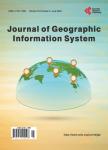A GIS-Based Methodology to Estimate the Regional Balance of Potential and Demand of Forest Chips
A GIS-Based Methodology to Estimate the Regional Balance of Potential and Demand of Forest Chips作者机构:University of Eastern Finland Joensuu Finland Natural Resources Institute of Finland Joensuu Finland VTT Technical Research Centre of Finland Ltd Jyv?skyl? Finland
出 版 物:《Journal of Geographic Information System》 (地理信息系统(英文))
年 卷 期:2016年第8卷第5期
页 面:633-662页
学科分类:0202[经济学-应用经济学] 02[经济学] 020205[经济学-产业经济学]
主 题:GIS-Based Methodology Forest Chips Potential Balance Bioenergy
摘 要:Finland’s national aim for annual consumption of forest chips is 25 terawatt hours (TWh) (equivalent to 13.5 million solid cubic metres) in combined heat and power (CHP) production and heat production in 2020. On average, the techno-economic potential of forest chips enables reaching the target at the national level. However, there is a geographical mismatch between the supply and demand regions. In this study, the regional balance of potential and demand from 2012 until 2020 was assessed using GIS-based methods. Economical, technical and ecological constraints were taken into account when different scenarios for municipality-level potentials were calculated. The forest chips’ consumption scenarios for plant-level were determined statistically (2012) or predicted (2020) by assuming that the total consumption of forest chips will reach the 13.5 Mm3. With help of procurement model, the use of different forest energy fuel types (stumps, logging residues and small-sized thinning wood) was spread to the procurement ring with the help of GIS coding. The forest chips’ regional balance map was made by subtracting the use of heat and combined heat and power plants’ (CHP) forest chips’ consumption from the municipality level potential data. The GIS-based method for balance calculation requires a significant amount of computer power but works well for local, municipality, regional and national-level balance calculations. The study showed that there are enough forest chips to supply the current and future demand when all forest energy assortments are used efficiently and in a sustainable manner. However, the results indicate that already at the present rate of forest chip consumption, in some areas there will not be any extra potential left. When consumption increases, the zero-potential area, in particular on the coast, expands. The highest free potential can be found in eastern and northern areas of Finland while the western and southern areas lack free potential.



